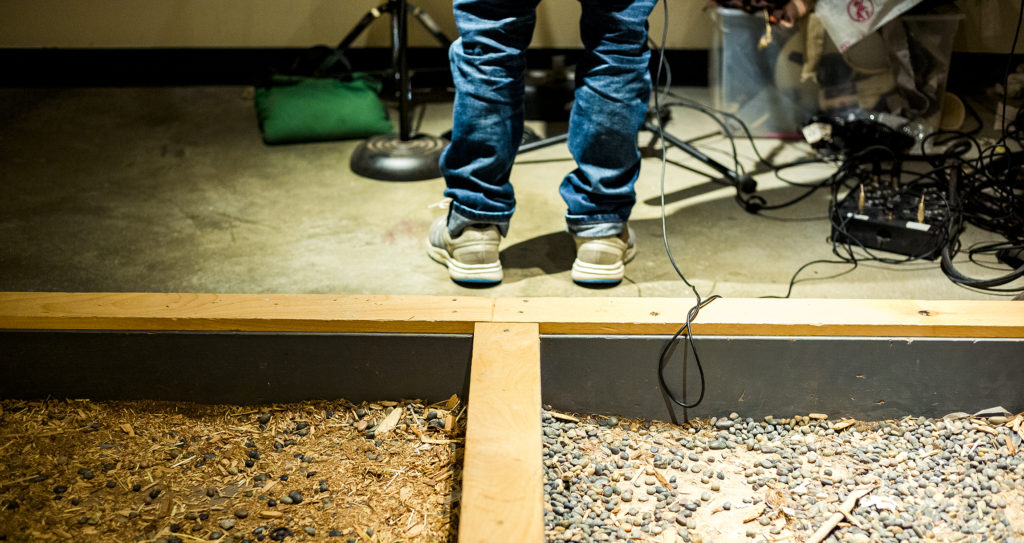Five Great Examples of Foley in Film and Music
Sound effects have changed since the days of cymbal crashes in cartoons. As we tell more complex stories, Foley and recording artists have stretched their imaginations to produce original sounds for a broad range of narratives. Using Foley in film and music is an integral part of the creative storytelling process.
People are often unaware that Jack Foley created the original concept of Foley sound effects back in 1960 for the film Spartacus. Despite never receiving credit for his work on any film, Foley fathered an industry-wide sound effects method that is still used today.
In honor of Jack Foley, we’ve put together a list of five times when unexpected items were used as Foley in films and music.
Shine On You Crazy Diamond (1975)
Playing wine glasses isn’t just a party trick. The instrument is known as the glass harp and it produces a sound that is stirringly beautiful with a surprising depth. Pink Floyd uses the instrument to great effect in the 13-minute song Shine On You Crazy Diamond. Before the guitar solos come in the intro to the tune sounds like the beginning of a fantasy movie. The glass harps tonality is similar to wind chimes or glockenspiels and it imbues the first few minutes with an ethereal haunting tone that carries throughout the entire song.
Dolly Parton 9 to 5 (1980)
Dolly Parton is a cross-generation icon and the song 9 to 5 is one of her most enduring hits. Before her bubbly voice comes in the song is driven by a clacking noise that gives it its poppy country vibe. That sound is Dolly Parton’s acrylic nails. In the 1980s, Acrylic nails were a part of the upwardly mobile working girl’s tool kit. In Dolly’s song, they produce a rapid clicking and tapping noise akin to almost a horse trot. Or more aptly a typewriter, fitting for a song about surviving corporate life.
Ice Age (2002)
Creating a sound for an animal in the world is straightforward enough. If you need a dolphin jumping in the water, you find a dolphin. But what do you do when the animal sound you need to replicate comes from an extinct animal? In the movie Ice Age, the Foley team had to create a soundscape for a world populated by extinct animals. A central character in the movie is Manfred the woolly mammoth. To make the sound of him walking the Foley team used a tree stump wrapped in leather dropped on pebbles and twigs and grass. The results were a deep thudding with the weight and heft of a big heavy hairy elephant. Proving that animated films geared toward children are as committed to realism as any other movie.
Wall-E (2008)
Sci-fi films have a rich history of Foley work. From lasers to robots to rocket ships, the genre is fertile grounds for creative sound makers. The main characters in the movie Wall-E are all robots that don’t speak. Because of the lack of dialogue each of the sound effects for the robots needed to function like voices, with unique expressions and personalities. The sound for Eve’s futuristic laser gun is made in part by stringing a slinky from floor to ceiling and hitting it with a wooden dowel rod. The resulting noise is quick zooming with a deep vibration. Once layered and processed the final sound was unique to the character and reminiscent of sci-fi movies from the past.
A Quiet Place (2018)
In a monster movie about a blind creature that uses echolocation to stalk its victims, sound is the most important storytelling element. To create a fully immersive scary movie, the central monsters had to communicate a lot of noise to the viewer while also being believable. In a feat of creativity, the Foley team used a stun gun on grapes to create the echolocation sound from the monster. The final sound for the film was slowed down to an ominous clicking heard to chilling effect.
Foley Replicates Real-Life Sound

Foley studio at The Los Angeles Recording School, a division of the L.A. Film School
Sound creation is the unsung hero of storytelling. The right sound effects used at the right time can add layers to the project and provide realism for the audience. And when done well, you won’t notice the inanimate objects replicating sound at all.
Want to learn more about what a Foley artist does? Find out about Foley artists.
